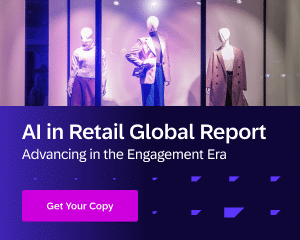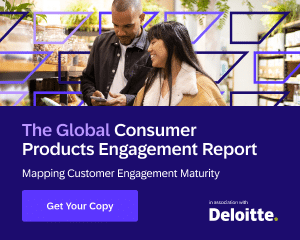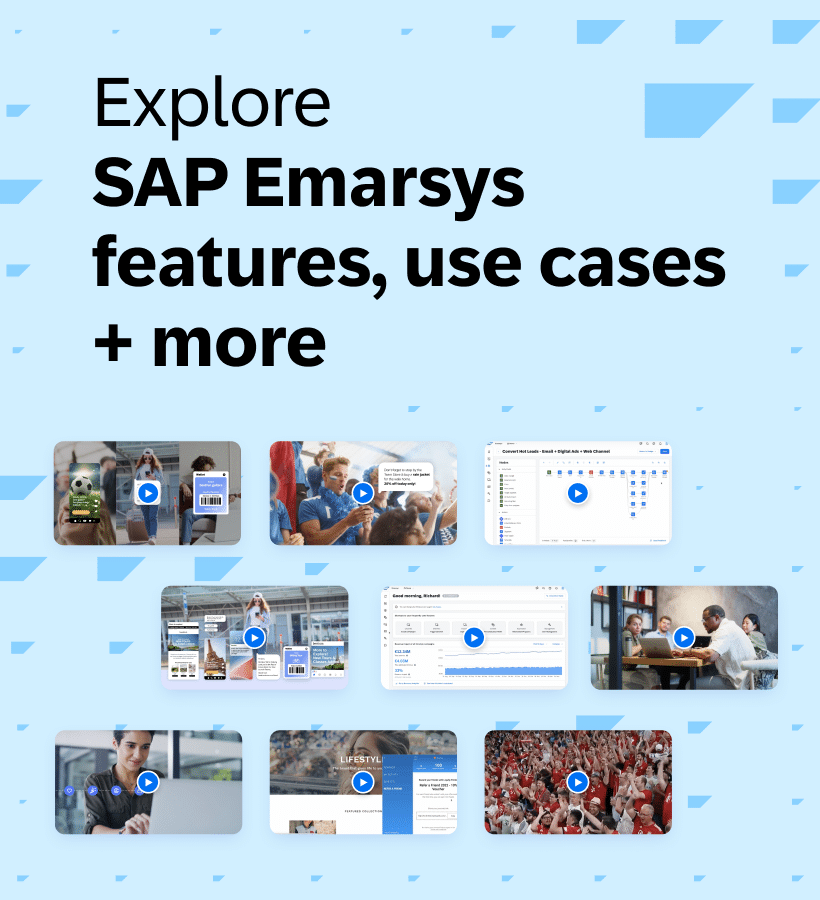SMS or short message service marketing isn’t new. It’s been part of marketers’ toolkits for a while, and most mid-to-enterprise businesses have run SMS campaigns for over a decade. So, why talk about SMS now?
In reality, many brands—even well-established ones—are still scratching the surface when fully leveraging SMS. They might send out generic promotions or shipping alerts, but they’re missing out on advanced personalization, real-time triggers, AI-driven insights, and an integrated omnichannel experience.
In this article, we’ll skip the basics and dive straight into cutting-edge strategies for enterprise-level SMS marketing. We’ll explore common pitfalls, opportunities for innovation, use cases, and more.
Why is SMS Marketing Still Relevant?
In an age where customers expect meaningful and consistent interactions across all channels, SMS can be a powerful engagement engine—provided it’s done right.
According to Emarsys research, 53% of consumers find SMS helpful. However, 23% would stop using a brand because of timeliness, meaning that it “spams” them with too many texts, highlighting the importance of relevance and timing. Many enterprise brands plan to increase SMS budgets this year as consumer preferences shift towards the convenience of being able to text businesses back.
Discover 20+ SMS marketing statistics (with sources) to know in 2025.
Use Case 1: AI-Driven Personalization
Why It Matters
Generic text messages might reach customers, but they rarely resonate. With AI, you can analyze real-time behaviors—like browsing history, purchase frequency, and loyalty tier—and send hyper-personalized SMS campaigns.
- Leverage an AI-powered SMS marketing solution: Connect with customers online and offline using personalized, adaptive SMS marketing campaigns and automation.
How to Implement
- Consolidate Data: Feed CRM, website analytics, and purchase history into a unified system for accurate AI insights.
- Adapt on the Fly: AI algorithms can automatically monitor opens, clicks, and purchases to refine future messages.
- Use Personalization: Platforms like the Emarsys Customer Engagement Platform can enable true one-to-one messaging at scale.
Use Case 2: Advanced A/B and Multivariate Testing
Why It Matters
While basic A/B testing is common, multivariate testing on a large scale remains an untapped resource for many enterprise brands. Testing different message formats, send times, promotions, and personalization tokens reveals what truly boosts conversions.
How to Implement
- Define Clear KPIs: Whether it’s click-through rates, conversions, or repeat purchases, before launching tests.
- Segment Your Audience: Different segments may respond differently to the same message. Test on subgroups to find the best fit.
- Monitor & Adjust Quickly: Use a robust platform (like SAP Emarsys) to roll out winning versions automatically once tests yield statistically significant results.
Use Case 3: Dynamic, Real-Time Triggers
Why It Matters
Broadcast messages risk coming at inconvenient times—or worse, feeling irrelevant. Real-time triggers let you send the right text when it’s most useful: after a specific action (e.g., cart abandon), a loyalty milestone, or a product restock.
In fact, the Adidas running app uses real-time triggers to deliver personalized content. They have increased +300% in campaign efficiency, +8M app opens from campaign content, and more. Learn how they did this.
How to Implement
- Map Out Behavioral Triggers: Identify key moments when an SMS can add immediate value, such as cart abandonment, price drops, re-stocks, and loyalty point expiration.
- Capture Zero-Party Data: Encourage sign-ups with preference forms. Customers often share their favorite product categories or traveling habits if they see real value in return.
- Use AI for Send-Time Optimization: Advanced platforms can detect the best time to deliver each trigger based on past user interactions.
Use Case 4: Cross-Channel Orchestration
Why It Matters
SMS doesn’t exist in a vacuum. Today’s consumers expect consistent, omnichannel experiences across email, social media, apps, and physical locations. When SMS is orchestrated with other channels, it can fill critical gaps and offer real-time nudges that convert.
How It Works in Practice
- Fallback Messaging: If a customer ignores your email or push notification, trigger an SMS.
- In-Store and Mobile Sync: An SMS might confirm an in-store pickup or provide a scannable QR code.
- Personalized Journey Mapping: Integrate your CRM, email, and SMS data to deliver a seamless path to welcoming new subscribers, upselling engaged shoppers, and re-engaging lapsed customers.
- Unified Data and Automation: A robust Omnichannel Marketing Platform can connect all these threads to enhance each channel.
Pro Tip: Research from Emarsys shows that 23% of consumers will abandon a brand that overcommunicates. Smart orchestration ensures you stay on their radar without pushing them away.

Use Case 5: Data-Driven Segmentation and Predictive Insights
Why It Matters
Enterprises often sit on massive data repositories but fail to segment customers effectively. When combined with predictive analytics, segmentation can identify future high-value buyers, potential churn risks, and even brand advocates who can be nurtured for referrals.
How to Implement
- Consolidate Data: This feature aggregates purchase history, loyalty status, browsing habits, and zero-party data into a unified profile.
- Identify Key Segments: Look for clusters of customers with similar behaviors, such as frequent but low-spend buyers or VIPs who purchase rarely but at higher average order values.
- Integrate Predictive Models: Use AI to model churn likelihood, high-value future customers, or product affinities. With SAP Emarsys AI-powered analytics, you get Insightful and revenue-driving marketing.
Challenges in SMS Marketing
Even seasoned brands can fall into costly traps that erode customer trust and ROI. Here are the top challenges:
- Over-sending or Irrelevant Messaging
-
-
- Symptom: High opt-out rates or spam complaints.
- Solution: Implement frequency capping and advanced segmentation. Send fewer, more relevant messages.
-
- Siloed Data
-
-
- Symptom: SMS campaigns operating on incomplete or outdated customer records.
- Solution: Integrate your SMS platform with a unified customer data environment to ensure real-time, 360° profiles.
-
- One-way Communication
-
-
- Symptom: A “no-reply” approach that offers no direct way for customers to respond or ask questions.
- Solution: Use two-way SMS for feedback and conversational marketing, especially in loyalty or service scenarios.
-
- Lack of Personalization
-
-
- Symptom: Generic offers that don’t reflect a customer’s purchase history or preferences.
- Solution: Tap into first-party data and advanced analytics to personalize messages, timing, and offers.
- Learn 10+ value exchanges to grow your first-party data with our playbook.
-
- Ignoring Omnichannel Synergy
-
- Symptom: SMS campaigns that don’t align with email, in-app, or social messaging.
- Solution: Treat SMS as part of a broader customer engagement journey, ensuring consistent experiences across all channels.
Elevate Your SMS Strategy with Emarsys
If you want to elevate your SMS approach, check out SAP Emarsys’s advanced SMS capabilities:
- Smart Segmentation: Combine multiple data points—purchase frequency, category interest, loyalty status—to create high-value segments for SMS.
- AI-powered Product Recommendations: Dynamically insert recommended products into SMS based on individual browsing and purchase patterns.
- Real-Time Event Triggers: Instantly fire off SMS messages after a specific customer action (e.g., “Back in stock” alert, shipping notification) so the message always arrives at the perfect moment.
- Omnichannel Dashboards: Monitor SMS performance alongside email and social media and push results in one interface, continuously refining your entire marketing strategy.
Check out SAP Emarsys’s AI-powered SMS Marketing to learn more.
If you’d like a demo or need guidance on taking your SMS strategy to new heights, reach out to Emarsys. Together, we’ll help you leverage advanced tactics, avoid common pitfalls, and deliver the personalized experiences your customers deserve.







